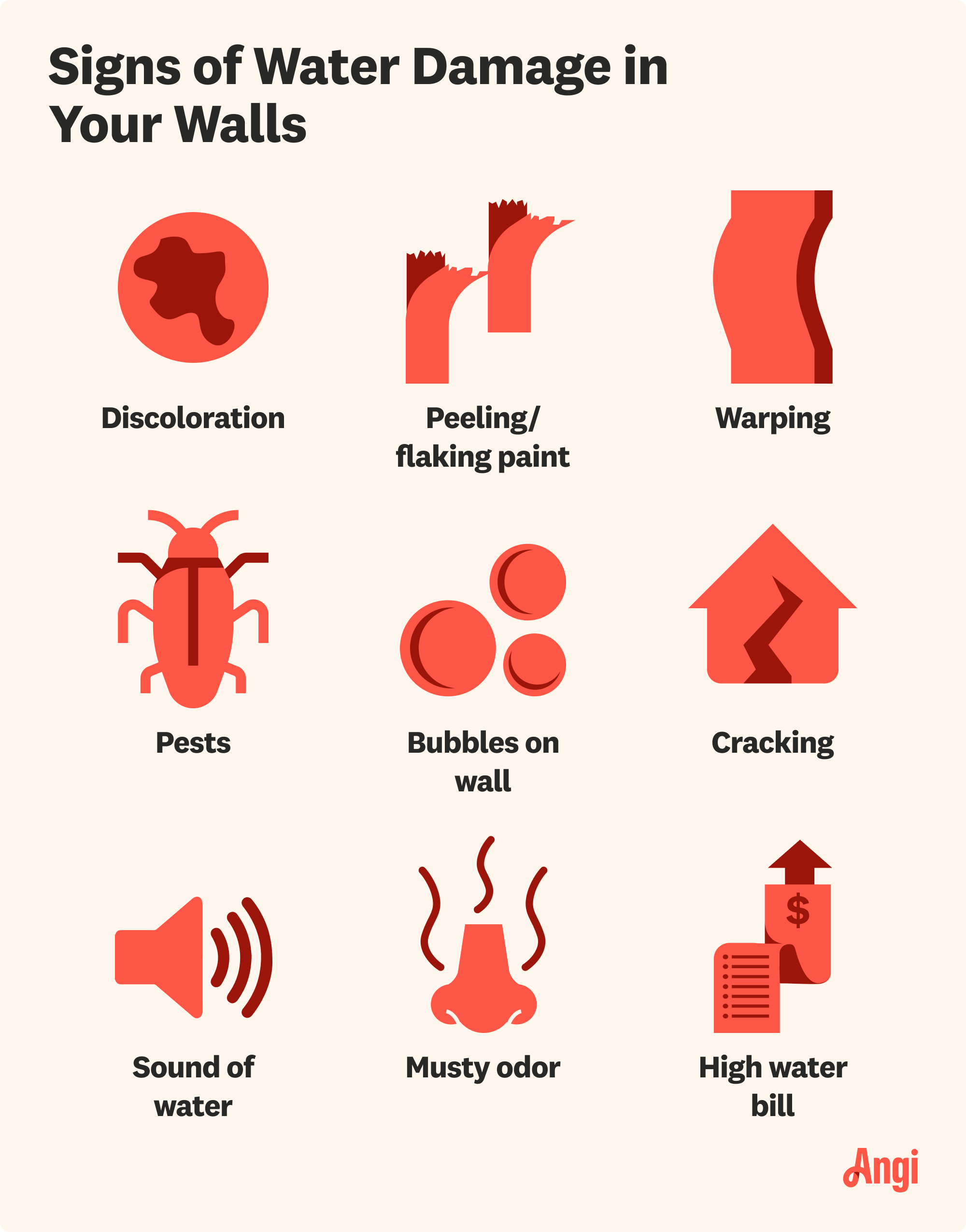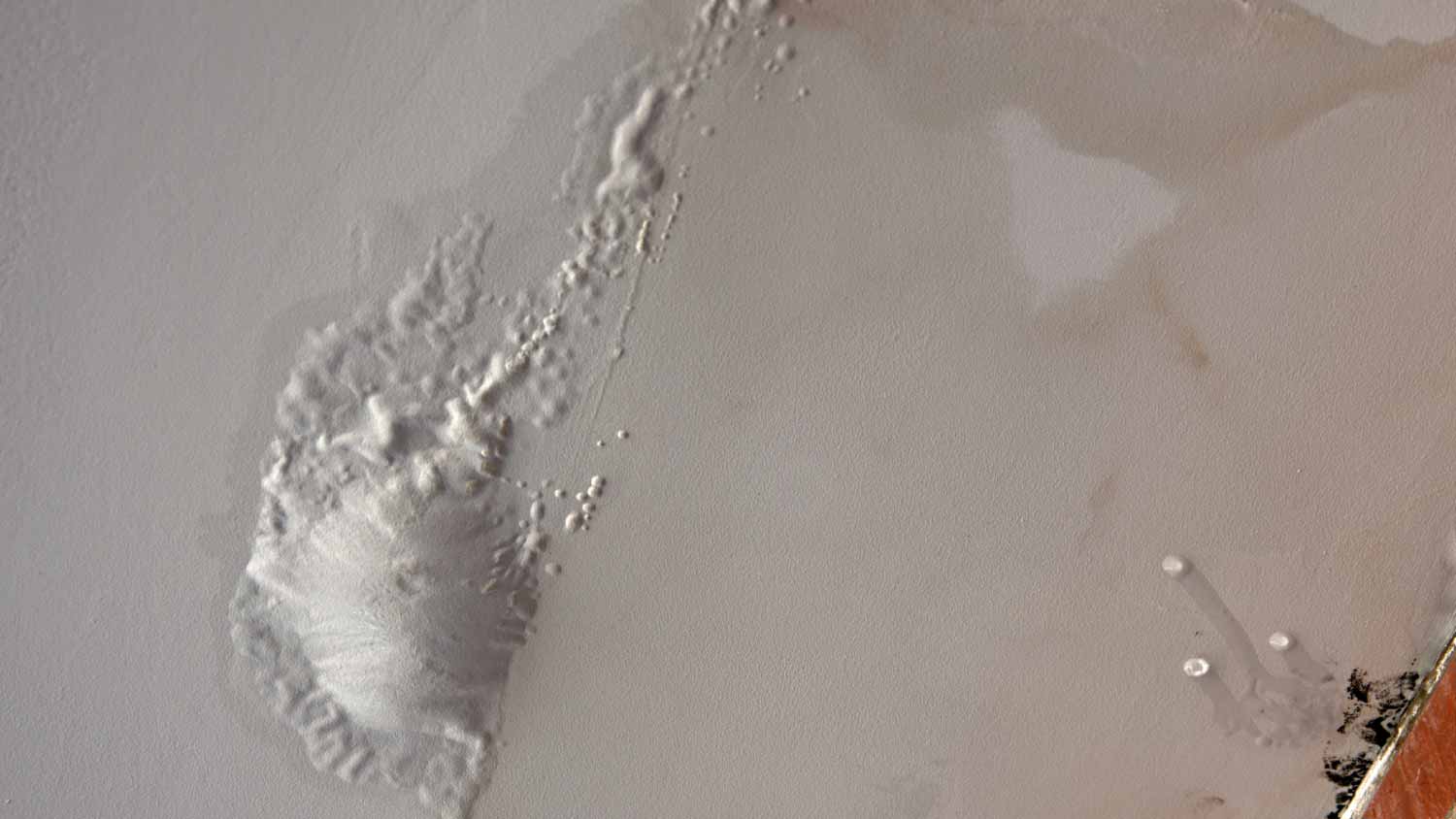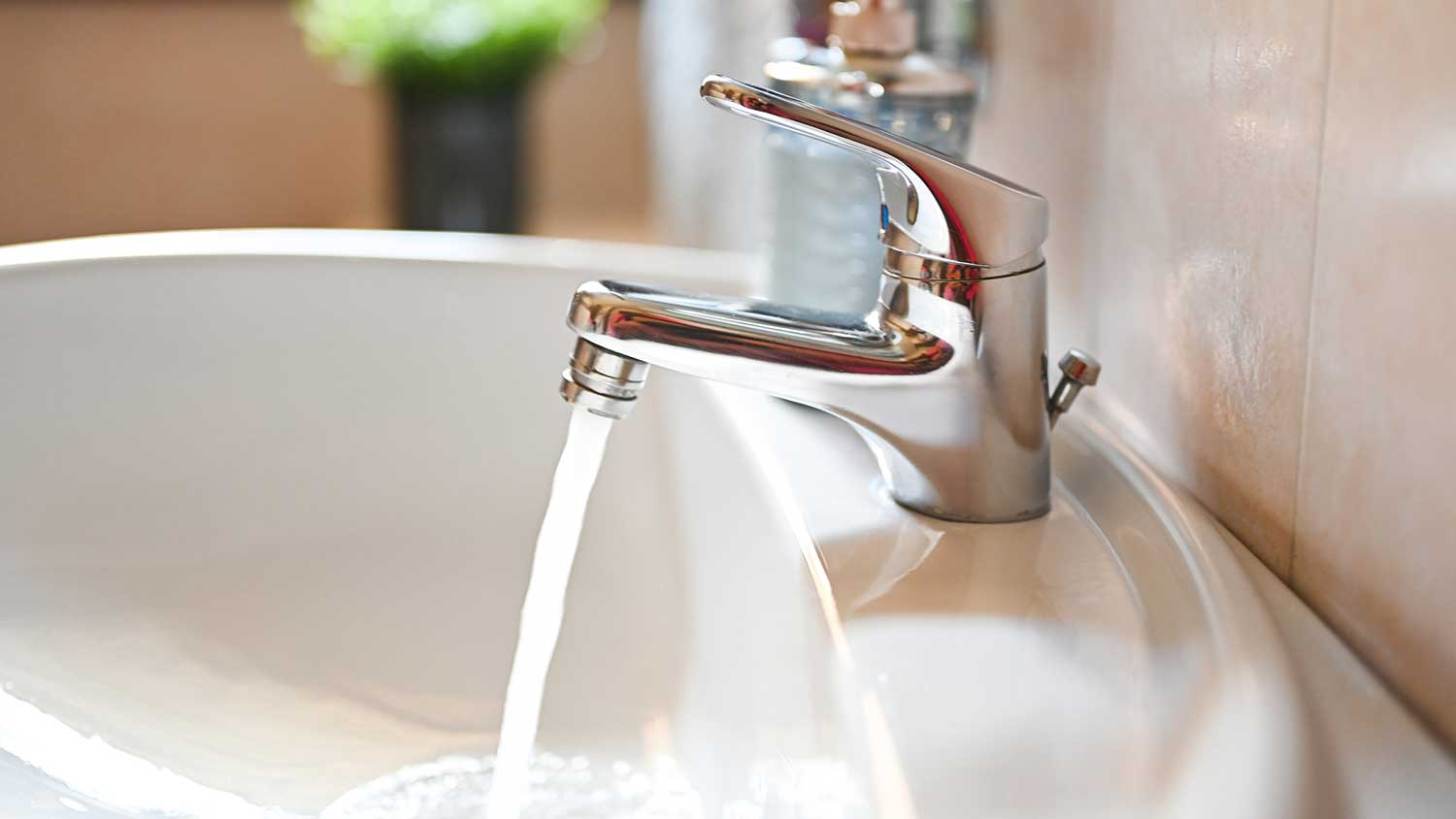
Ozone treatment can help with lingering smoke odors. Learn about ozone smoke removal costs to get an accurate idea of how to budget for this service.
Keep the dry in drywall


Signs of water damage in drywall include peeling paint, staining, or a musty smell.
If you have a leaky pipe, you might also notice a significant jump in your water bill.
Water damage in drywall should be dealt with immediately before structural problems occur or mold sets in.
While no one can prevent the water damage that might come from a hurricane or other natural disaster, recognizing the signs of water damage in drywall can help you catch a small plumbing leak or appliance problem before it gets out of hand. Since water damage needs to be addressed promptly, being aware of the indicators that water has seeped into your drywall is critical for taking action within hours rather than days.
Recognizing early warning signs is important, but figuring out the right fix isn't always simple. Delaying professional help or attempting complex DIY repairs can lead to further damage and increased costs. With our network of local pros, you can hire a skilled professional to assess the issue and recommend the best solution.
Water damage usually occurs because of a leaky pipe, a flood, or other unforeseen circumstances. Because of this, you should remember these practical and safety considerations. With unexpected water coming into your home, there is a major risk to your property as well as you and your loved ones, as water and electrical components don’t mix.
If the plumbing leak is coming from a burst pipe or plumbing fixture, shut off your water main to prevent further leaking.
Turn off the breaker box if it is located in a dry part of your home. If the breaker box is anywhere near the site of the damage or incident, do not attempt to access it—instead, call the utility company and ask them to turn it off or send a technician out.
Make sure pets and children have been removed from the home.
If the water damage is coming from a backed-up sewer or the water is gray or black—don’t touch it. It is likely a serious biohazard risk and needs to be dealt with by professionals.
Mold can make you sick. If you discover mold or mildew, call a local mold inspector as soon as possible.
Water can seep behind walls and under flooring, leading to hidden damage. Homeowners can check for unseen moisture by looking for cool spots on walls (which may indicate dampness), using a moisture meter (available at hardware stores for around $20-$50), or simply pressing a paper towel against suspect areas to check for dampness. Peeling paint, bubbling wallpaper, and musty odors are also key signs of hidden water damage. — Felicia Wilkes, Comfort Specialist at A-One Refrigeration & Heating Inc
Knowing the signs of water damage in drywall can help prevent a small problem from becoming a major one. With knowledge and awareness, as well as regular maintenance and check-ups in your home, you can both prevent water damage and, if it does occur, identify it before it gets out of hand.

Discoloration or staining is one of the first and most apparent signs of water damage in your walls. On light walls, these stains may appear as beige or brown spots, while on darker-colored walls, you should look for patches that are sunken.

Water seeping out of a wall is something you might spot in a horror movie—and rightfully so. This is a sign of serious water damage as it indicates that moisture has penetrated your drywall. You might notice water droplets on the drywall’s surface, pooling below furniture or appliances, or a more humid atmosphere.
Cracking drywall is another sign that water damage has occurred. Cracking might appear as sharp edges or jagged patterns in the wall or a loss of mortar or joint compound.

If your wall’s paint begins to flake, peel, or otherwise look deteriorated, it could be warped from water damage in the drywall. Regardless of your paint color, excess moisture can cause it to lift off of the wall surface. The flaking might start off small, but it can quickly increase in size if there is a leak and it isn’t repaired right away.
If your wall is warping, swelling, or sagging, it is likely becoming weaker under the weight of the water it’s absorbing. If your walls look puffy, concave, or otherwise damaged, call a local water damage restoration company as soon as possible to assess the damage and make any necessary repairs.

If your water bills jump suddenly or gradually increase over a few months, you could have a pipe leak. Remember that water damage in a wall can go unnoticed for a long time without any majorly visible signs, so monitoring your water bill is a great way to catch and flag a potential problem. If your water bill has risen unexpectedly, call a nearby plumber to test your pipes.
If you can hear water when no one else is home washing dishes or taking a shower or when no appliances are running, it’s possible that there is a leak somewhere in your home, causing drywall damage.
.jpg?impolicy=leadImage)
Does something smell a little off? If all the usual culprits are clean (we’re looking at you, Fido), a musty smell could indicate a buildup of moisture leading to mold and mildew growth. Visible mold often appears as green or black spots. If you notice mold or mildew on your walls or ceiling, make sure to enlist the help of a professional mold remediation company—mold is difficult to remove and can be toxic to your health.
As soon as you spot any signs of water damage in your drywall, it’s time to call in a professional. Water damage can quickly lead to mold and mildew growth, which can threaten your home’s structure. Waiting too long to repair a leaky pipe or other water damage can lead to much costlier repairs down the line and could significantly comprise your home’s foundation.
If water is dripping from your walls or ceiling, shut your water off until a plumber can address the leak and fix any pipes that need repairing. You might also need to reach out to a local water damage remediation company to repair the drywall and properly remove excess water and moisture in your home.
If you have some plumbing experience, can identify the leak, and feel confident in your ability to repair water-damaged drywall, you could try to repair and restore a small area of damage. That said, because of how quickly water damage can spread, it’s always wise to contact an expert to assess the situation.
Upon examination by a professional plumber, many small leaks often turn out to be much larger than expected. If you only repair a small patch of drywall, thinking the leak is minor, you may find yourself dealing with a more significant leak later on.
In addition, working around mold and mildew requires special training and protective equipment, and is always best left to a professional. The average water damage repair cost is $3,594, but it ranges between $1,307 to $5,912, depending on the extent of the damage.
The saying “an ounce of prevention is worth a pound of cure” is especially true when it comes to water damage, which can be a costly headache to repair. Follow these water damage prevention tips to stop any water damage from occurring in the first place.
Have your pipes regularly checked for signs of leaks and other problems
Inspect your roof once a year to check for missing shingles or cracks that could allow water into your home
Caulk any cracks, as cracks are an easy entry point for water to get into your home
Clean your gutters at least twice a year to prevent debris from building up and causing water to pool
The average cost to repair water-damaged drywall is between $300 to $850, with most homeowners spending around $550. This does not include any work to replace broken fixtures or leaky pipes.
Repairing a burst pipe costs between $1,000 and $4,000—if you need new plumbing, the expense could cost between $350 and $2,000, depending on the scope of the project and which parts need to be replaced.
If you discover mold, expect to pay around $2,225 to have it removed by a qualified mold removal service near you.
As you can see, water damage can be expensive to fix. To find qualified professionals to help you, make sure to read reviews and get quotes from at least three companies.
From average costs to expert advice, get all the answers you need to get your job done.

Ozone treatment can help with lingering smoke odors. Learn about ozone smoke removal costs to get an accurate idea of how to budget for this service.

Fire hydrant costs might not be an expense you think about day-to-day, but they’re important to consider for the safety of your home.

Fire damage restoration costs vary widely based on the extent of the damage. Learn how to assess your home and estimate your total after a fire.

Water damage is classified by how much water there is and what materials are affected. Learn about the four classes of water damage and how to identify them.

Buying a house in a flood zone can pose a risk, but it’s not always a bad idea. Check out our tips to make sure you stay protected when moving.

Repair water-damaged wall plaster at home by yourself following this easy step-by-step guide.